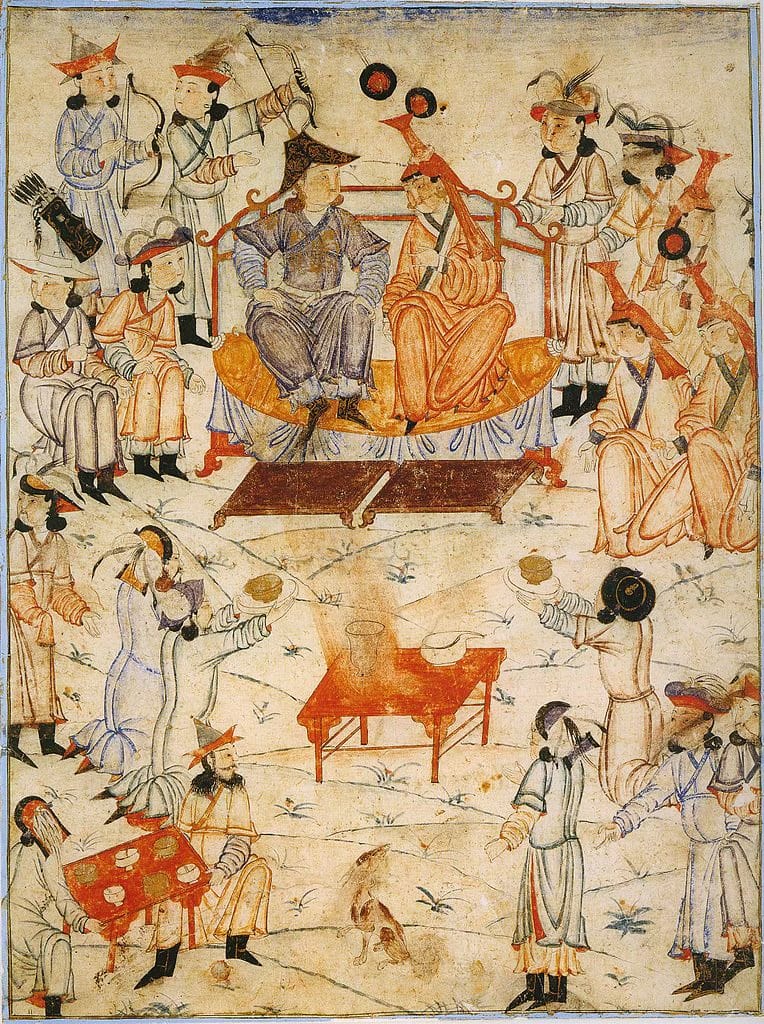“She Who Would Direct the Affairs of State”: Teaching The Influence of Mongol Women
Discussion of teaching the influence of elite Mongol women

In the previous post, I discussed how the Mongols’ nomadic heritage contributed to their consistently flexible and dynamic approach to empire-building. One notable omission from that post was the role of elite Mongol women, who regularly played an important role in the Mongol Empire. Almost all the textual primary sources about the Mongols include references to the influence of elite Mongol women. Many of the visual primary sources show the wives of Mongol khans sitting next to their husbands. In the painting below, we see Kublai Khan sitting next to his senior wife while the junior wives, at a slightly lower level, surround the couple.

Compared to many of the other great empires we teach about, the consistently important role of elite Mongol women is unique. Even as the empire fractured in the late thirteenth century, Mongol wives continued to be critical figures in the four Mongol states. How can we explain their significance and teach it to our students? Using a few excerpts from recent scholarship and a selection of textual and visual primary sources, we can help students see how Mongol women were an integral aspect of Mongol empire-building.
Women on the Steppe
This content is for Paid Members
Unlock full access to Liberating Narratives and see the entire library of members-only content.
SubscribeAlready have an account? Log in



